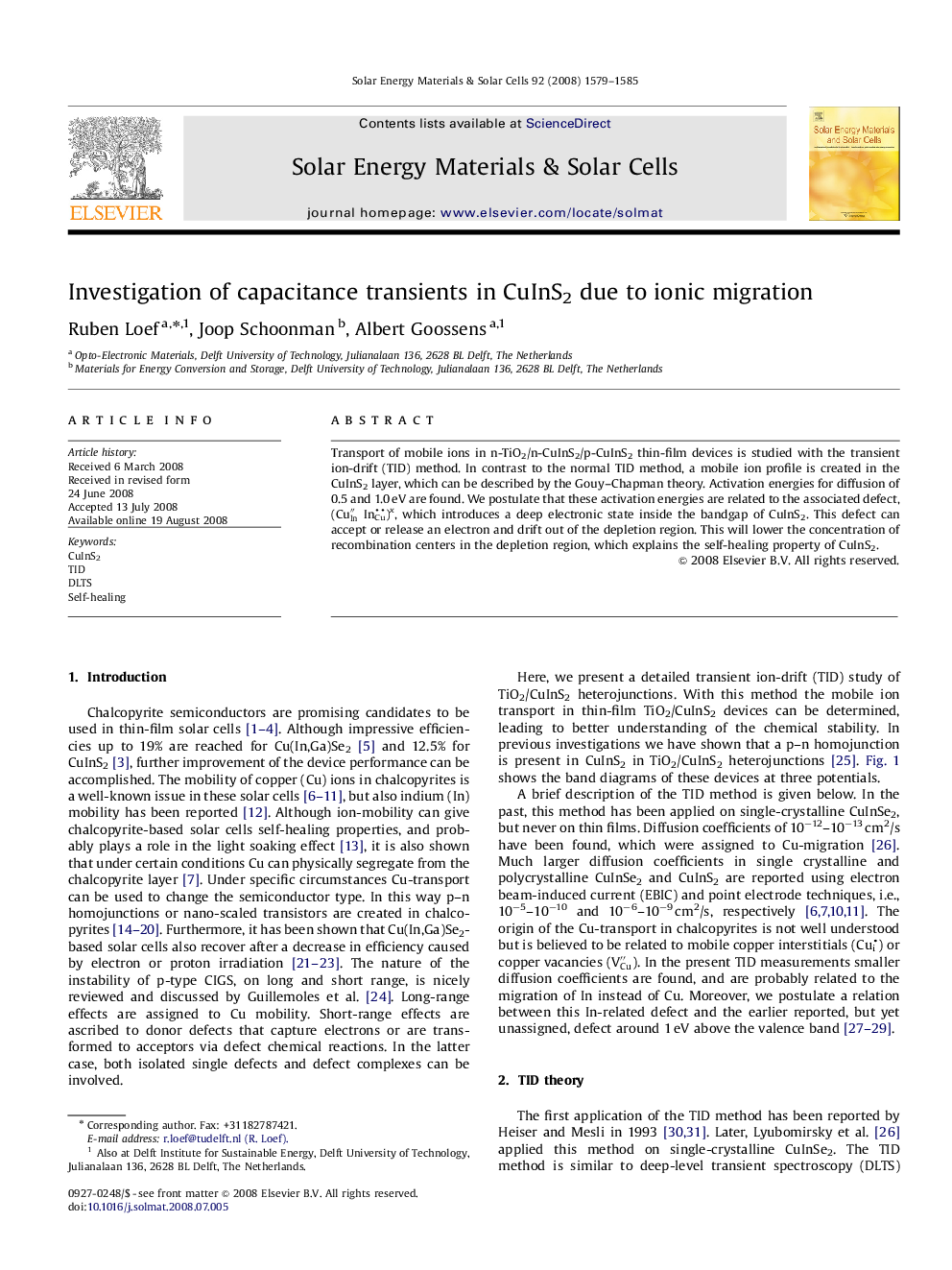| Article ID | Journal | Published Year | Pages | File Type |
|---|---|---|---|---|
| 80212 | Solar Energy Materials and Solar Cells | 2008 | 7 Pages |
Abstract
Transport of mobile ions in n-TiO2/n-CuInS2/p-CuInS2 thin-film devices is studied with the transient ion-drift (TID) method. In contrast to the normal TID method, a mobile ion profile is created in the CuInS2 layer, which can be described by the Gouy–Chapman theory. Activation energies for diffusion of 0.5 and 1.0 eV are found. We postulate that these activation energies are related to the associated defect, (CuIn″ InCu)x, which introduces a deep electronic state inside the bandgap of CuInS2. This defect can accept or release an electron and drift out of the depletion region. This will lower the concentration of recombination centers in the depletion region, which explains the self-healing property of CuInS2.
Keywords
Related Topics
Physical Sciences and Engineering
Chemical Engineering
Catalysis
Authors
Ruben Loef, Joop Schoonman, Albert Goossens,
